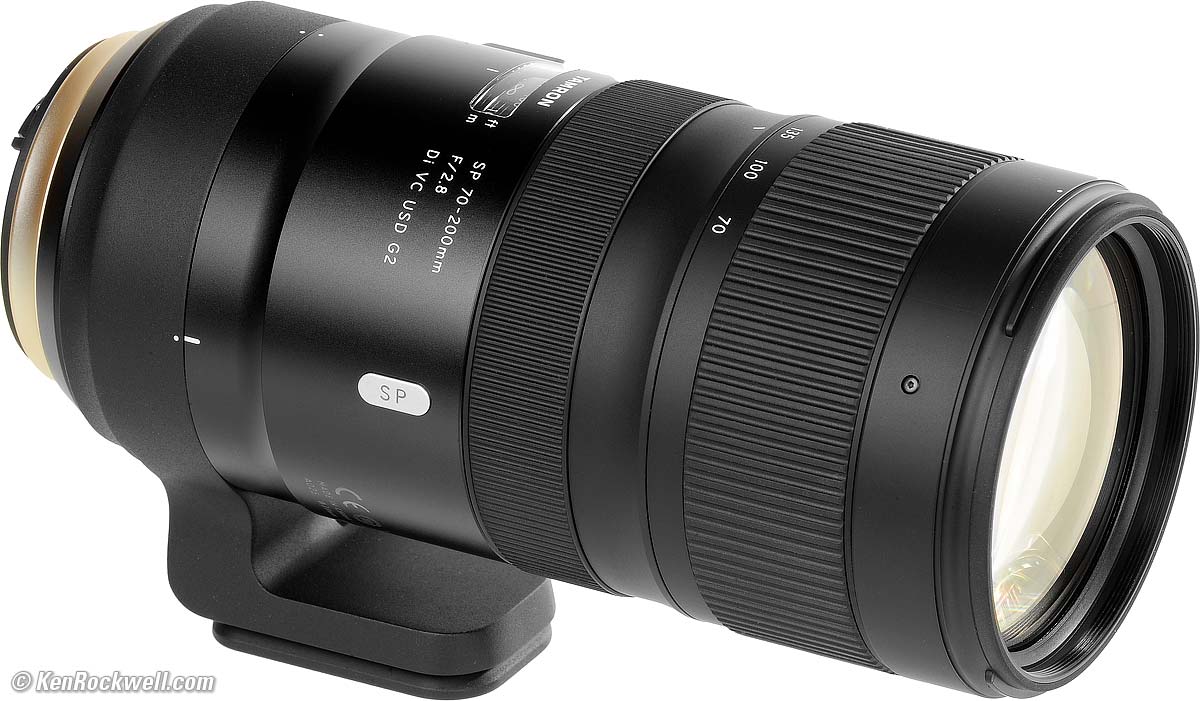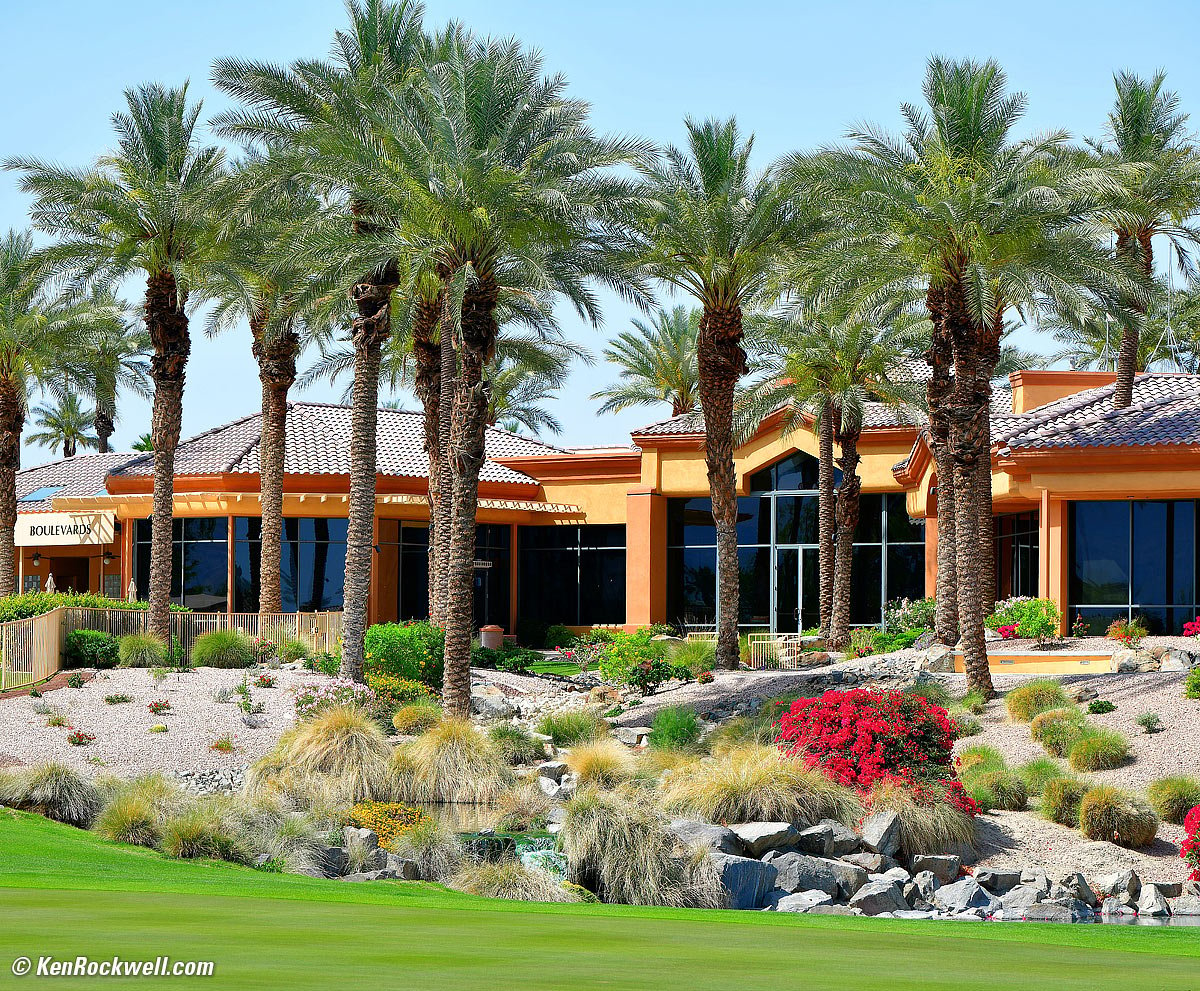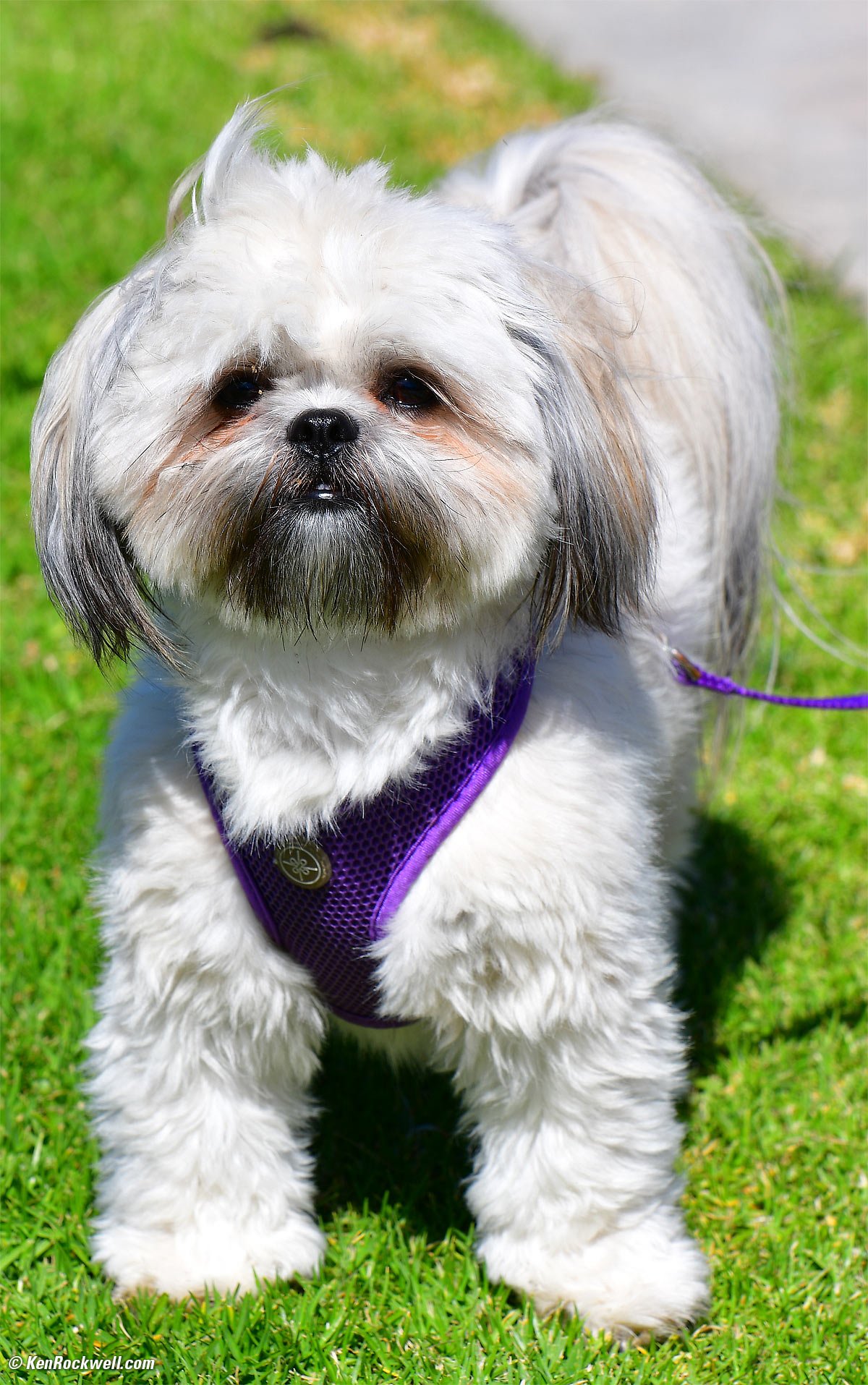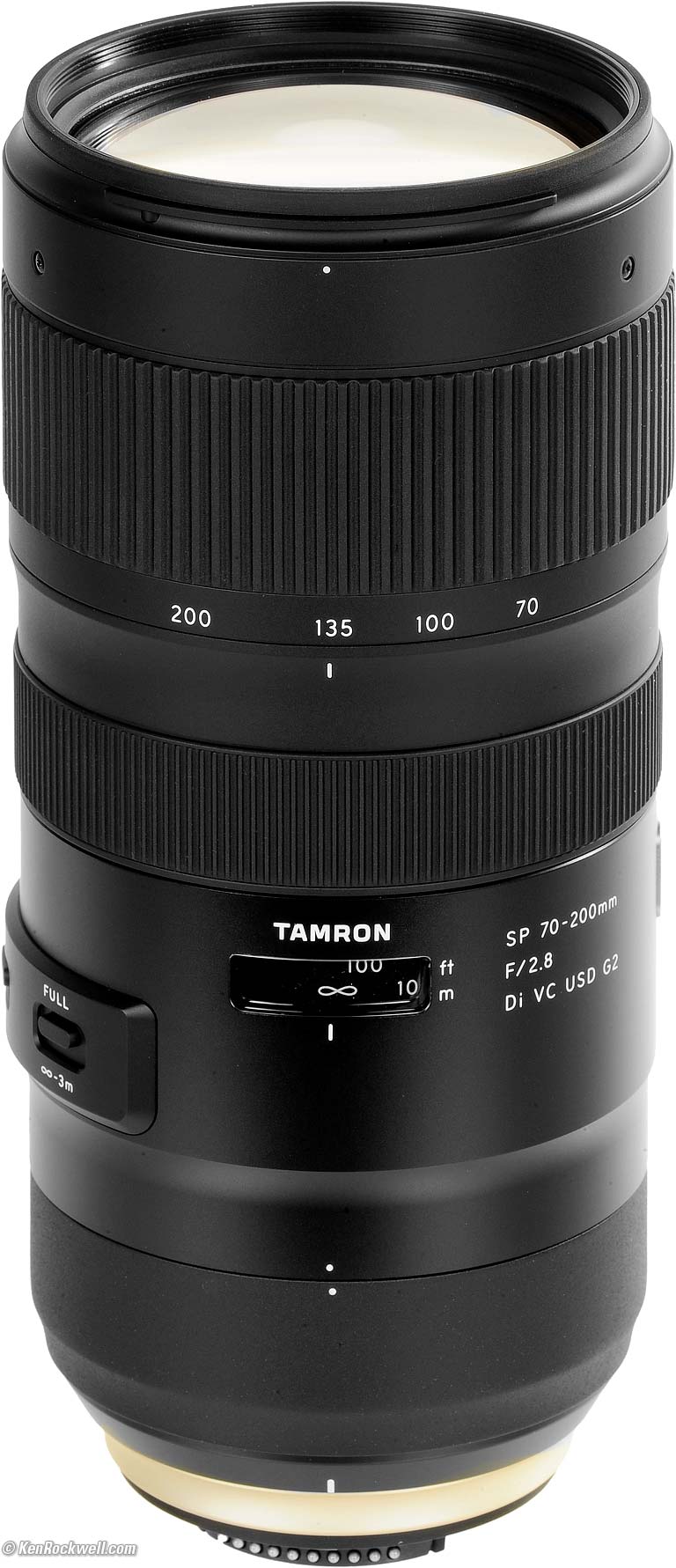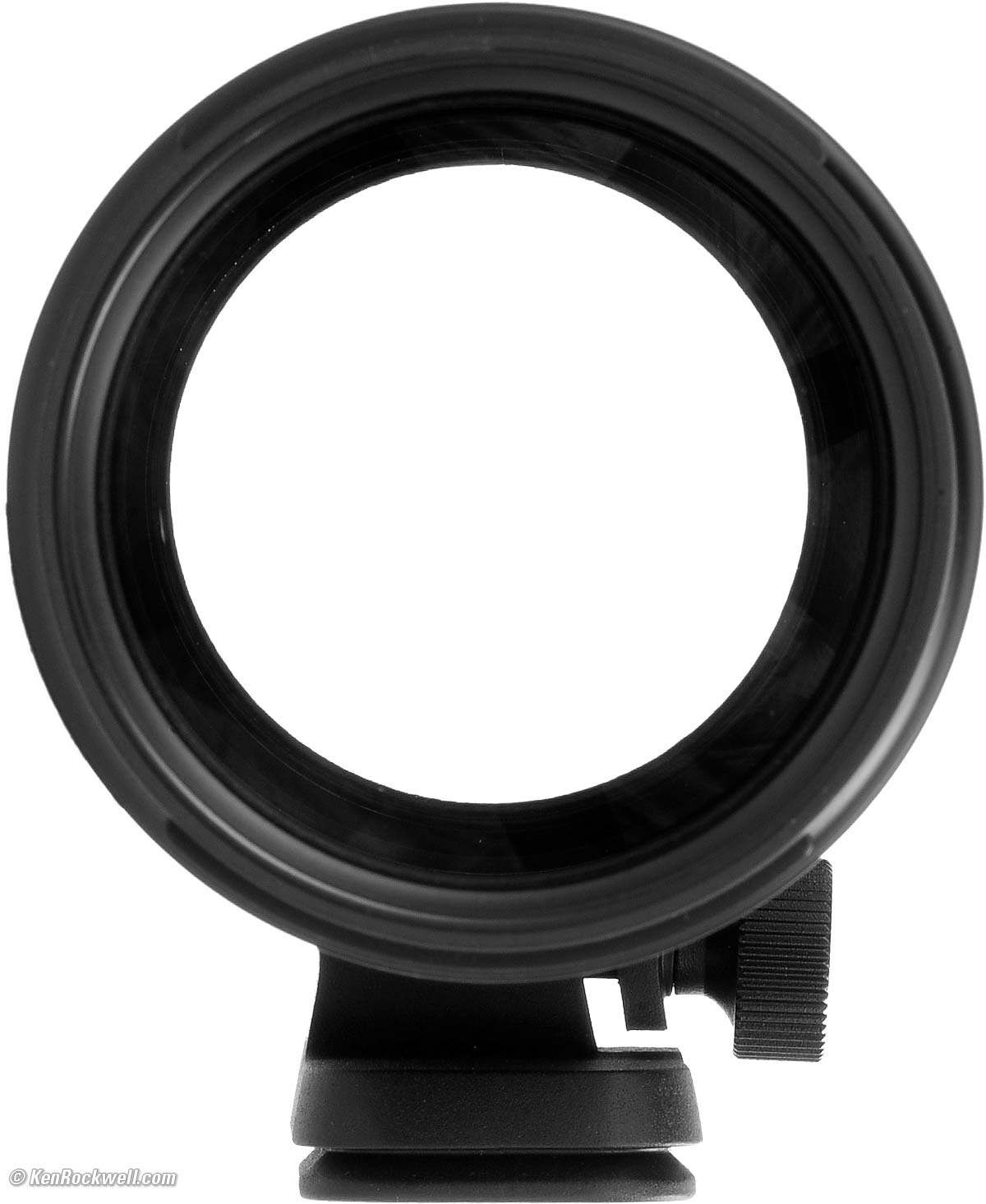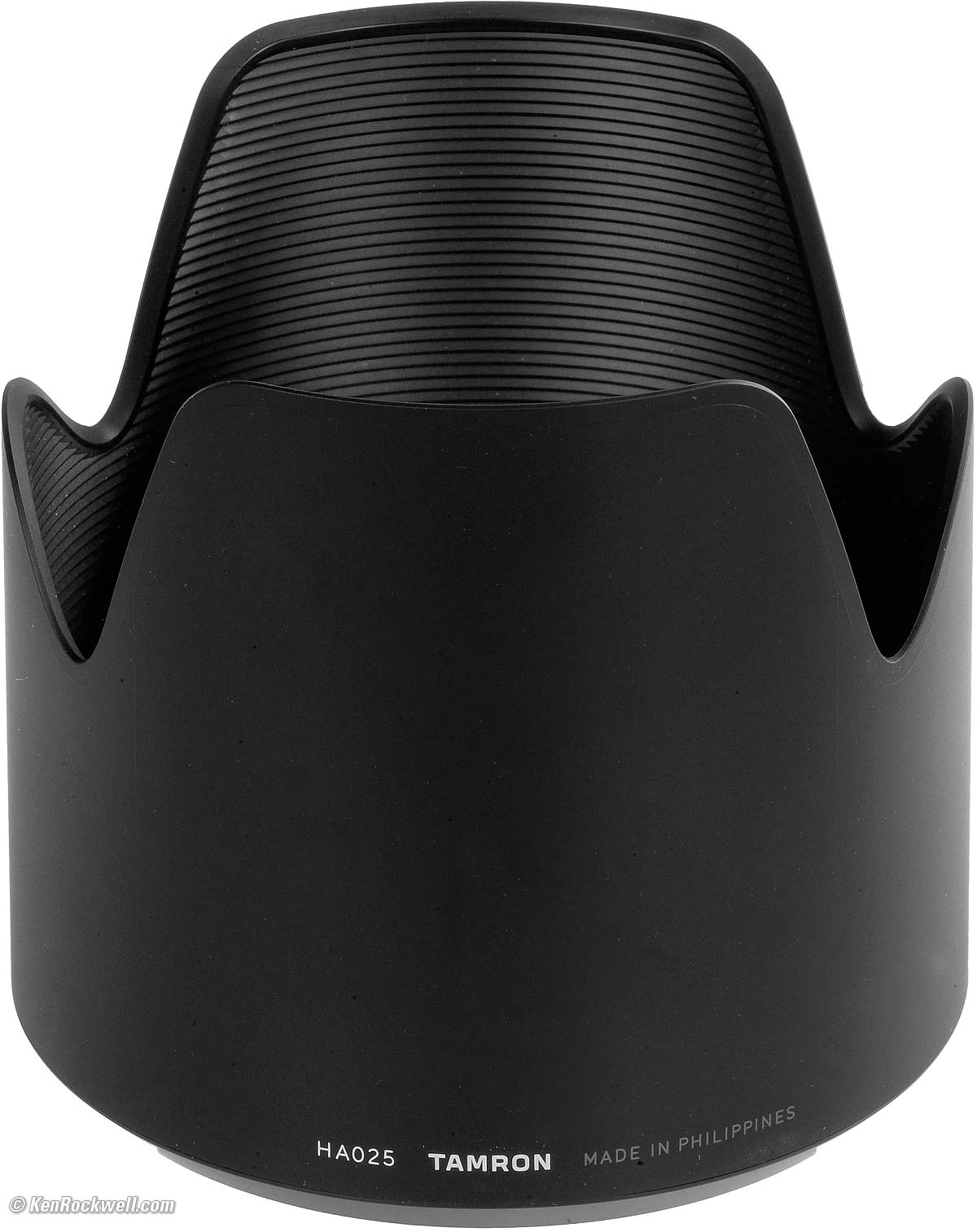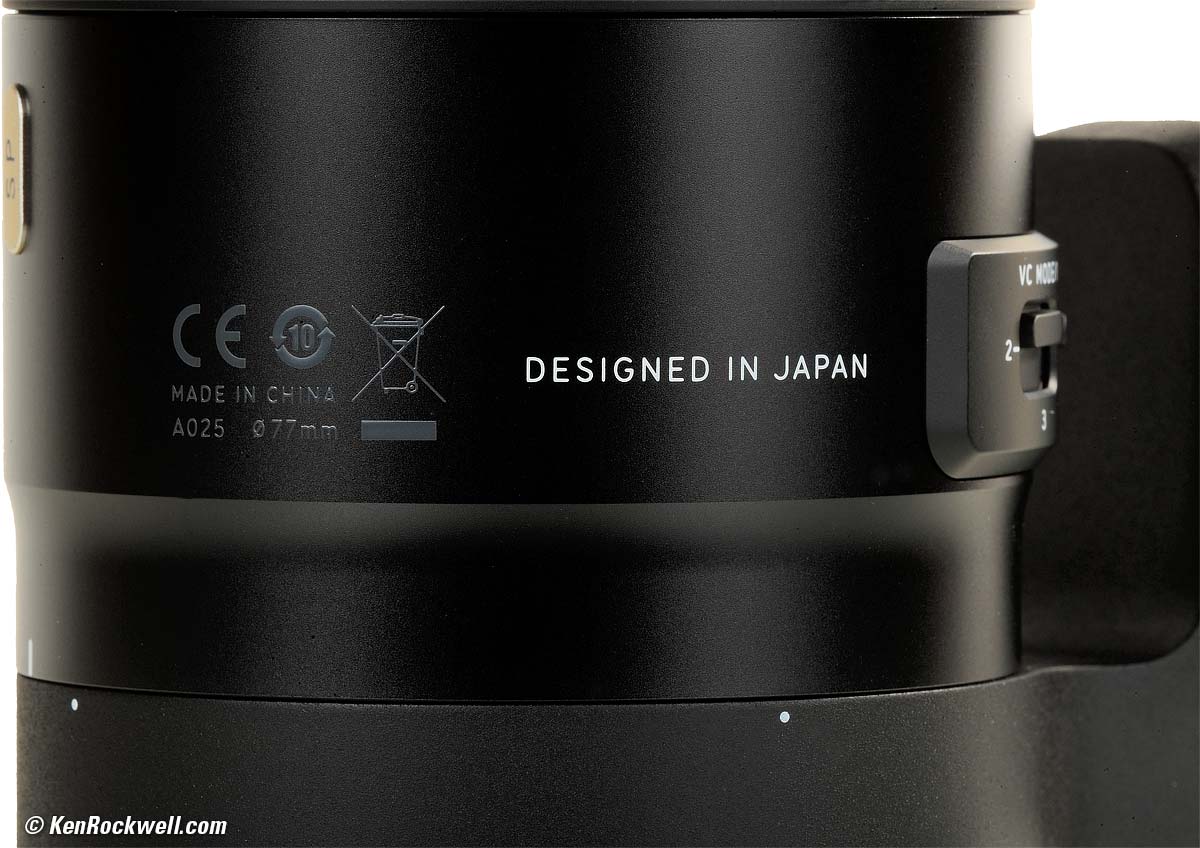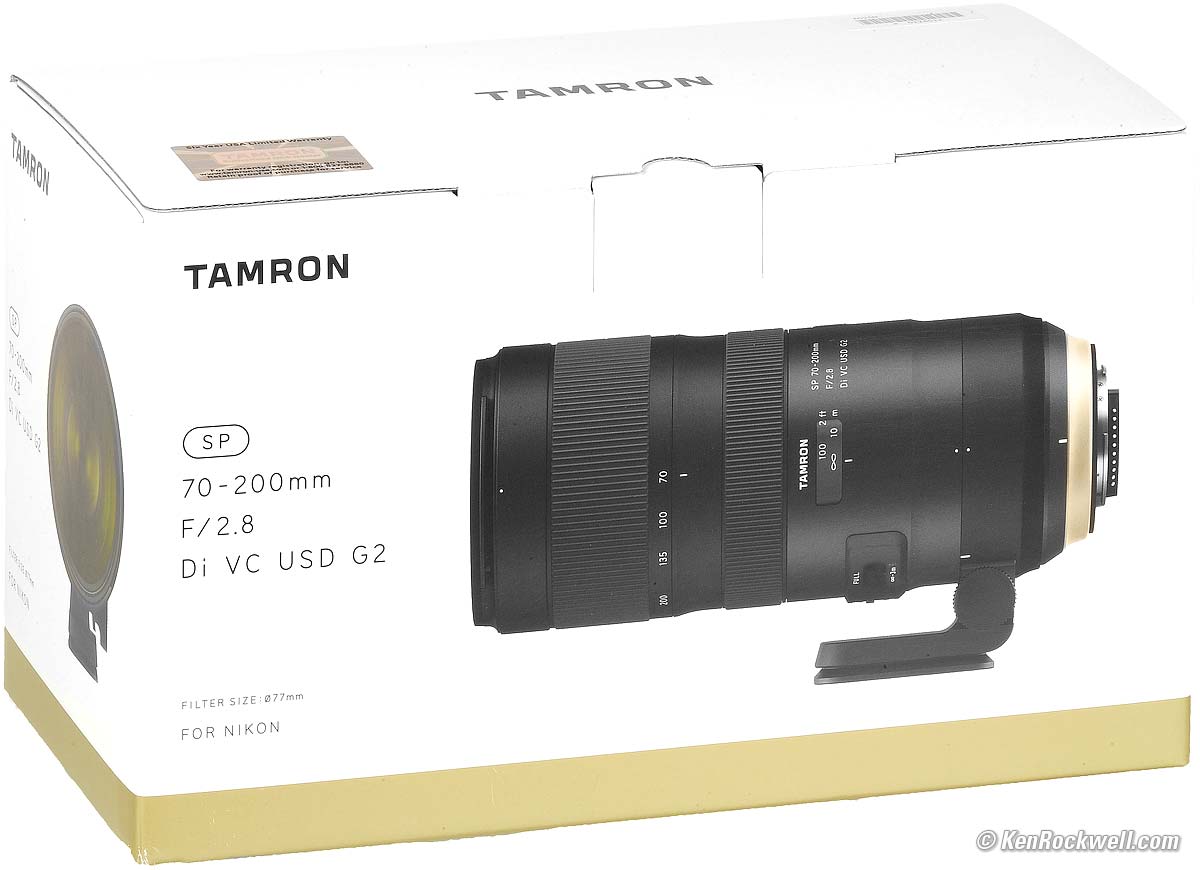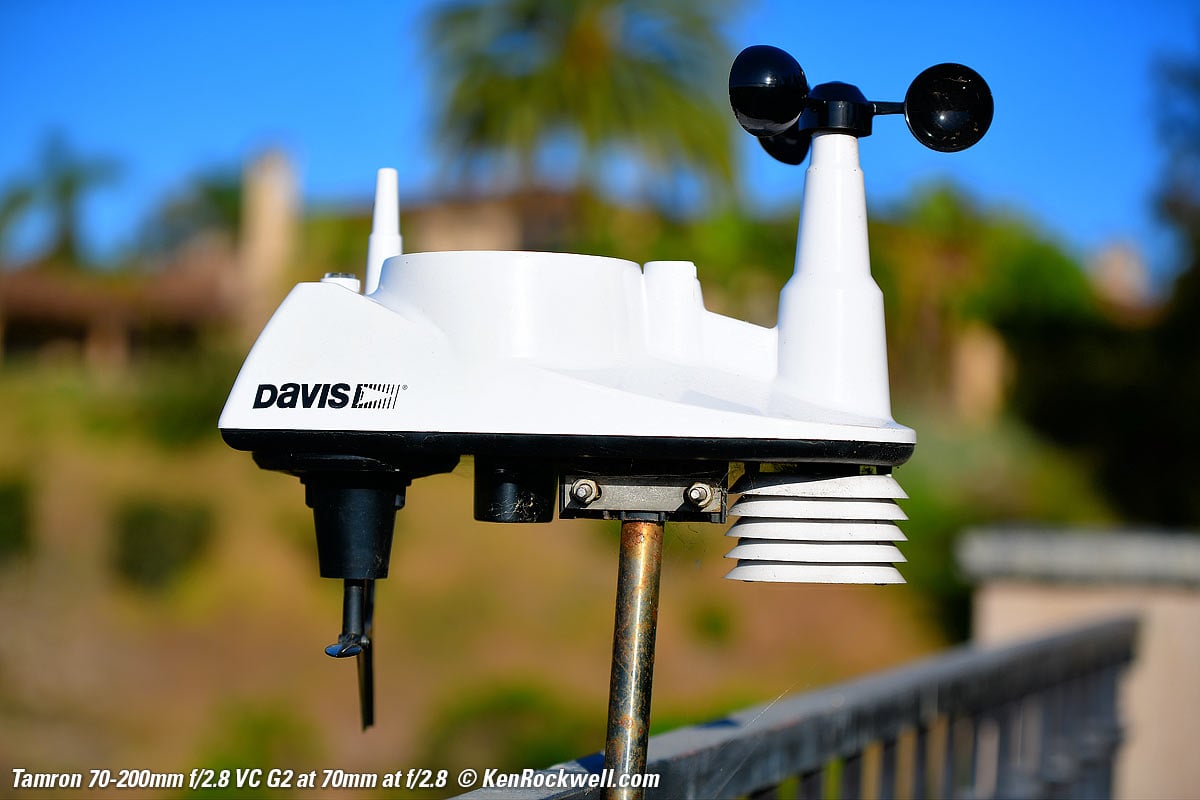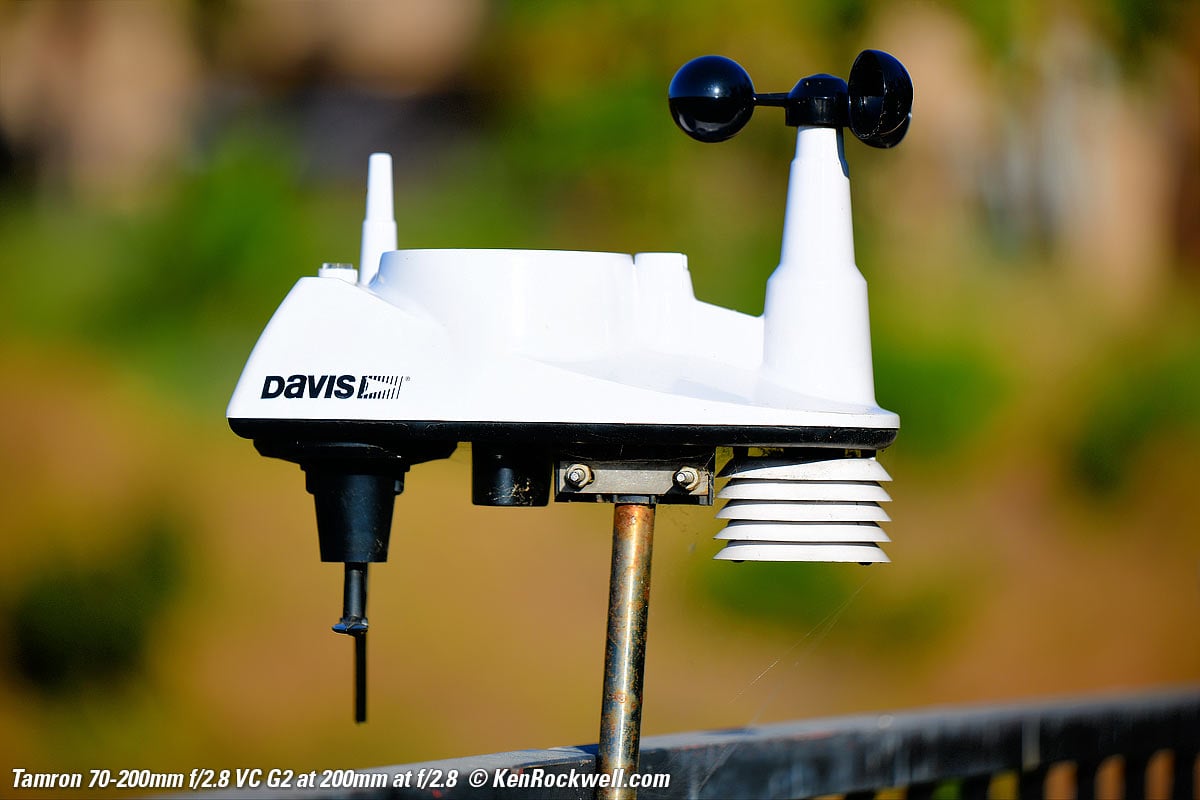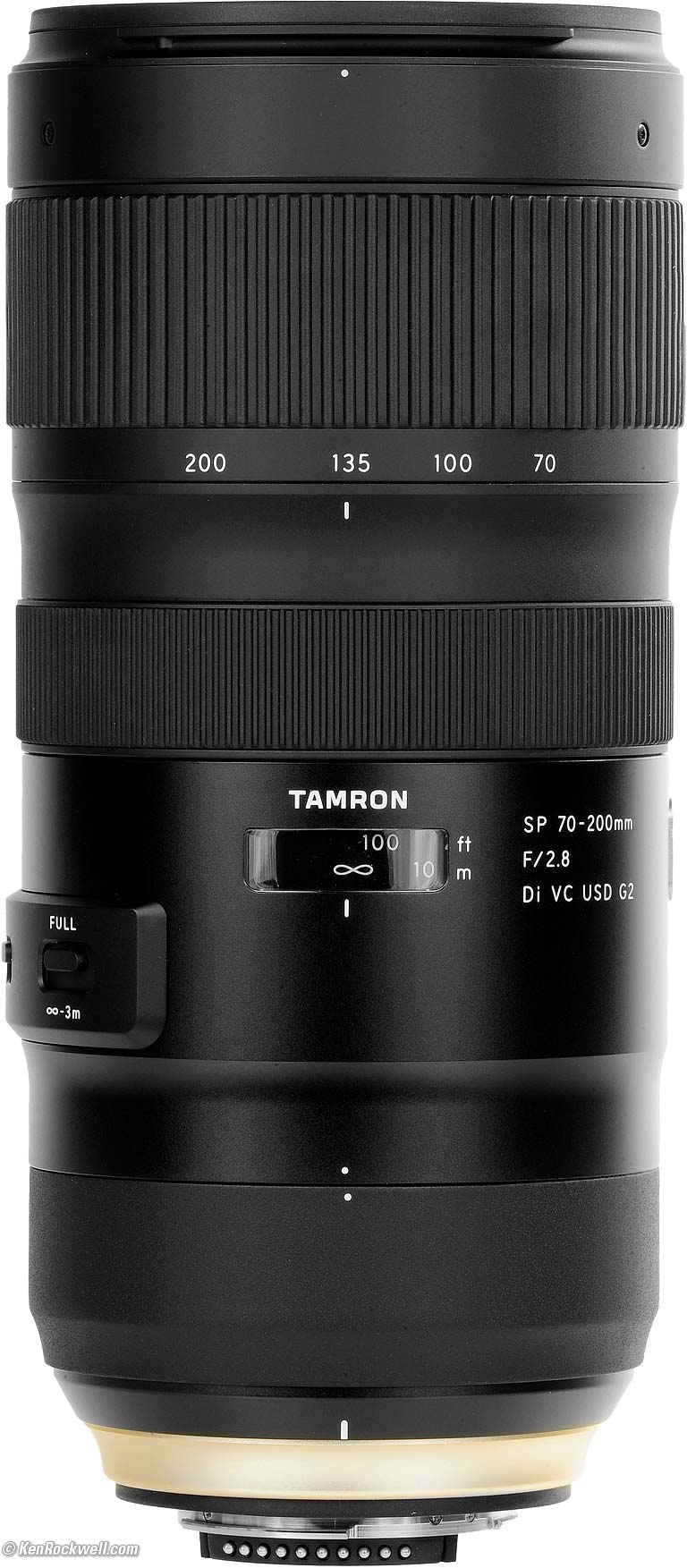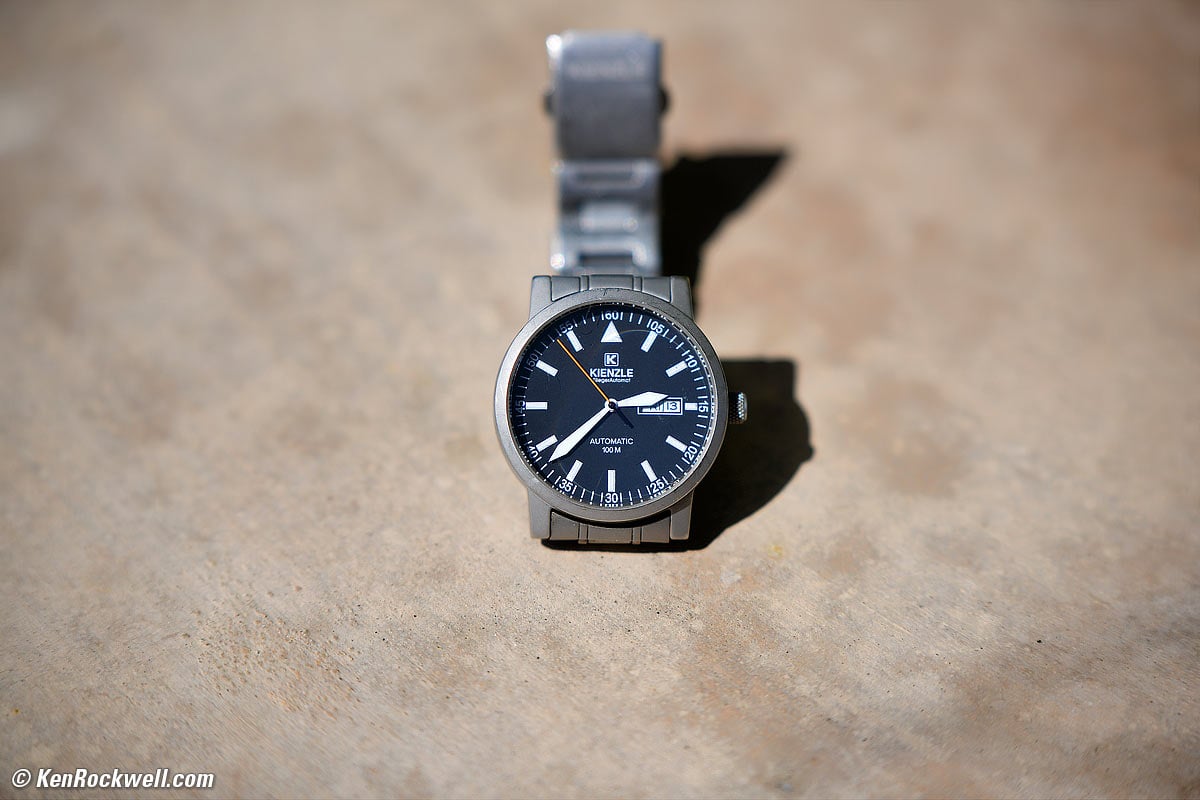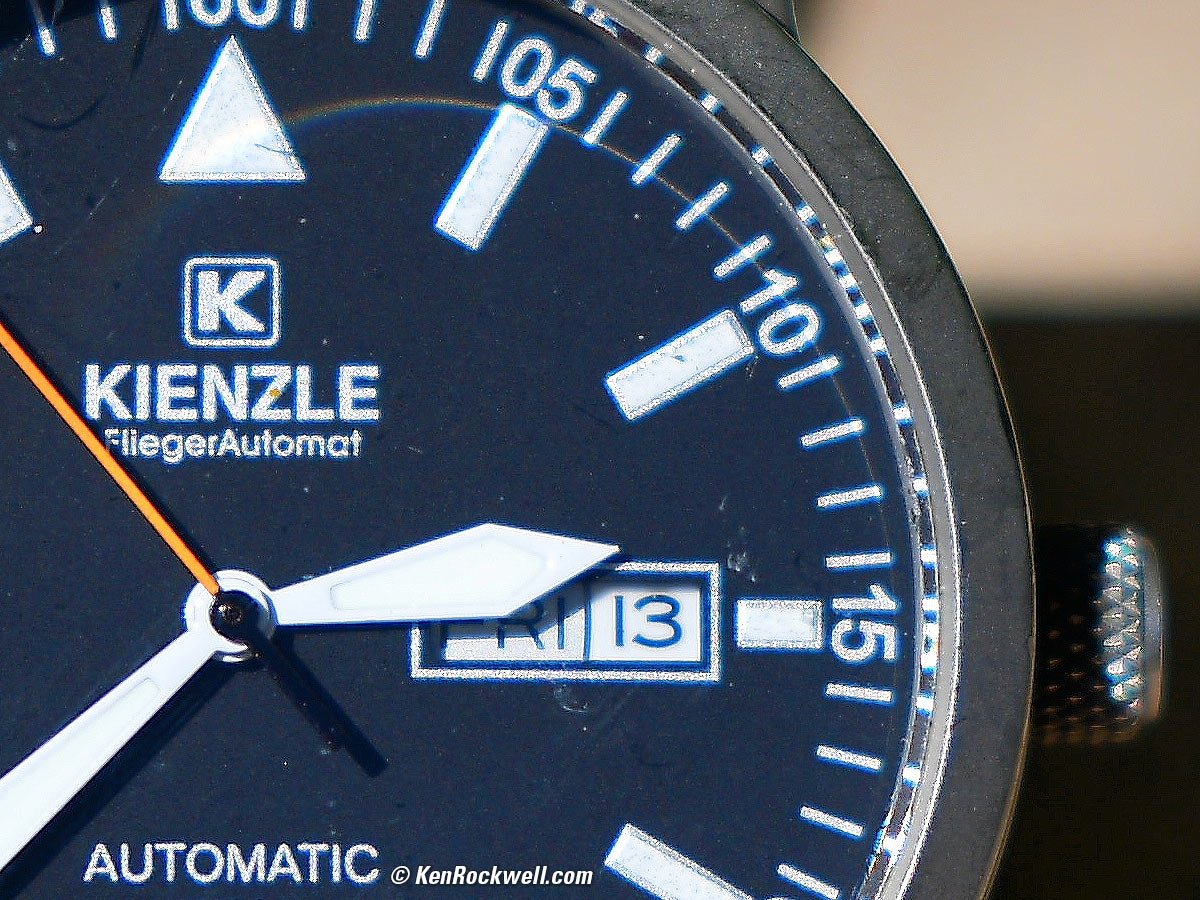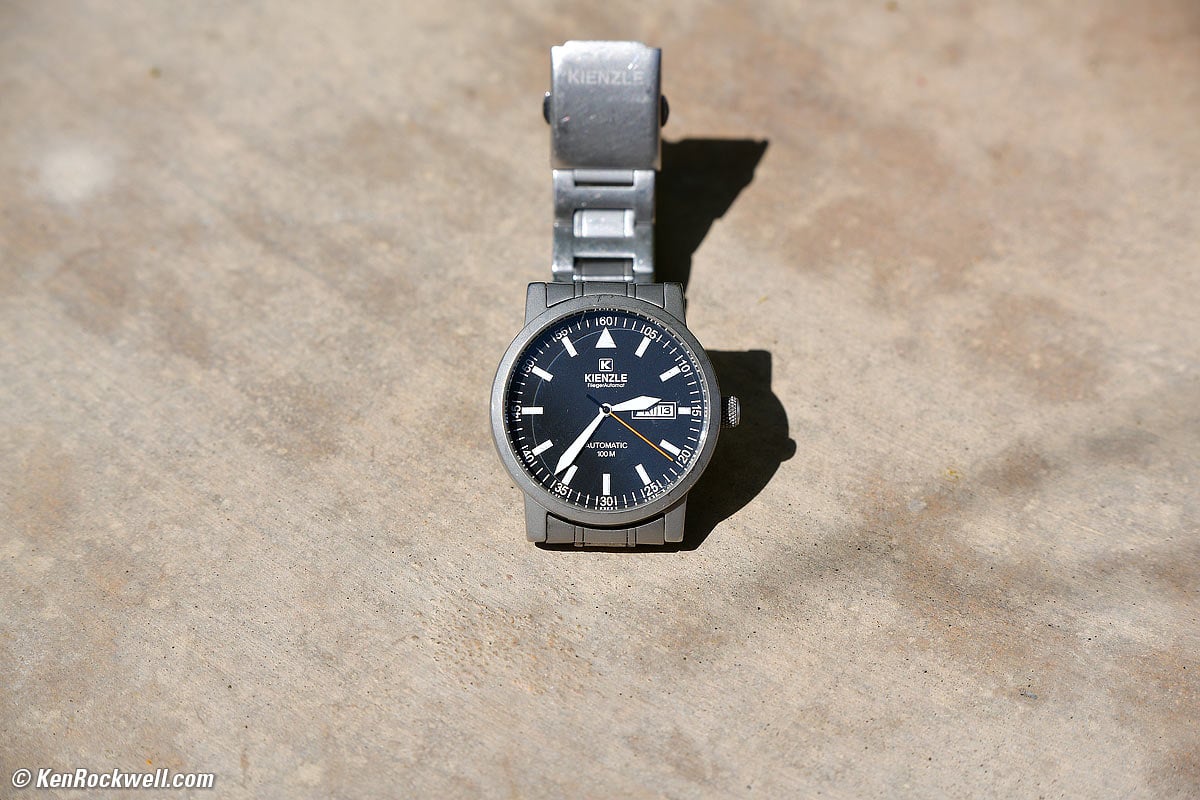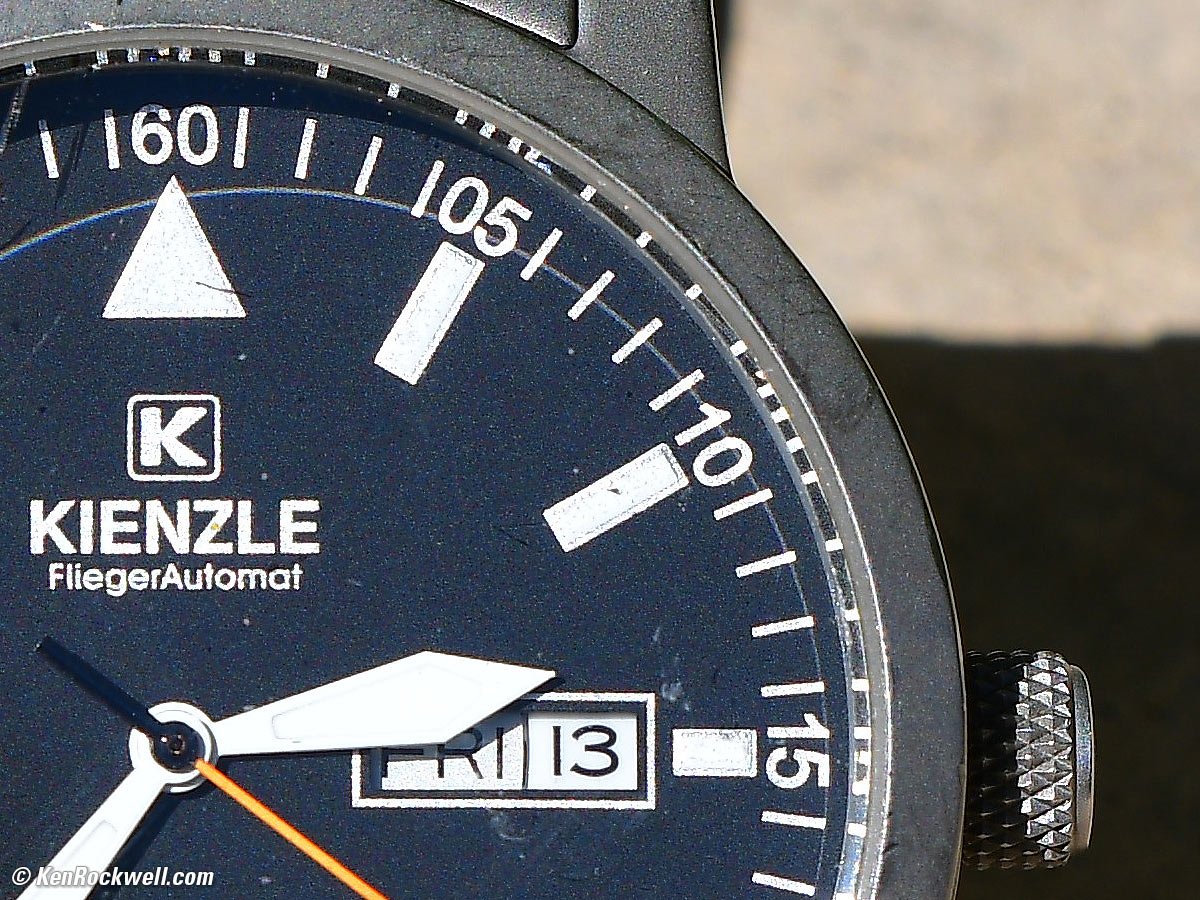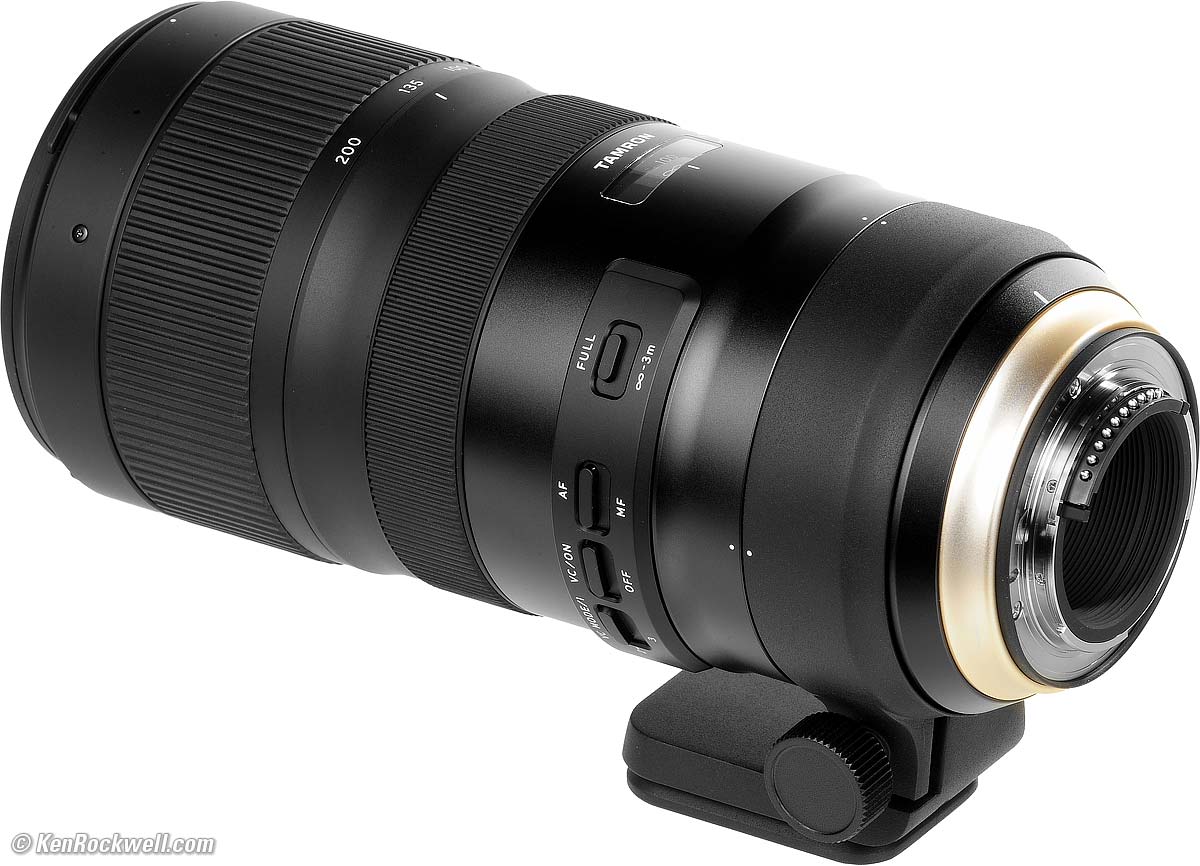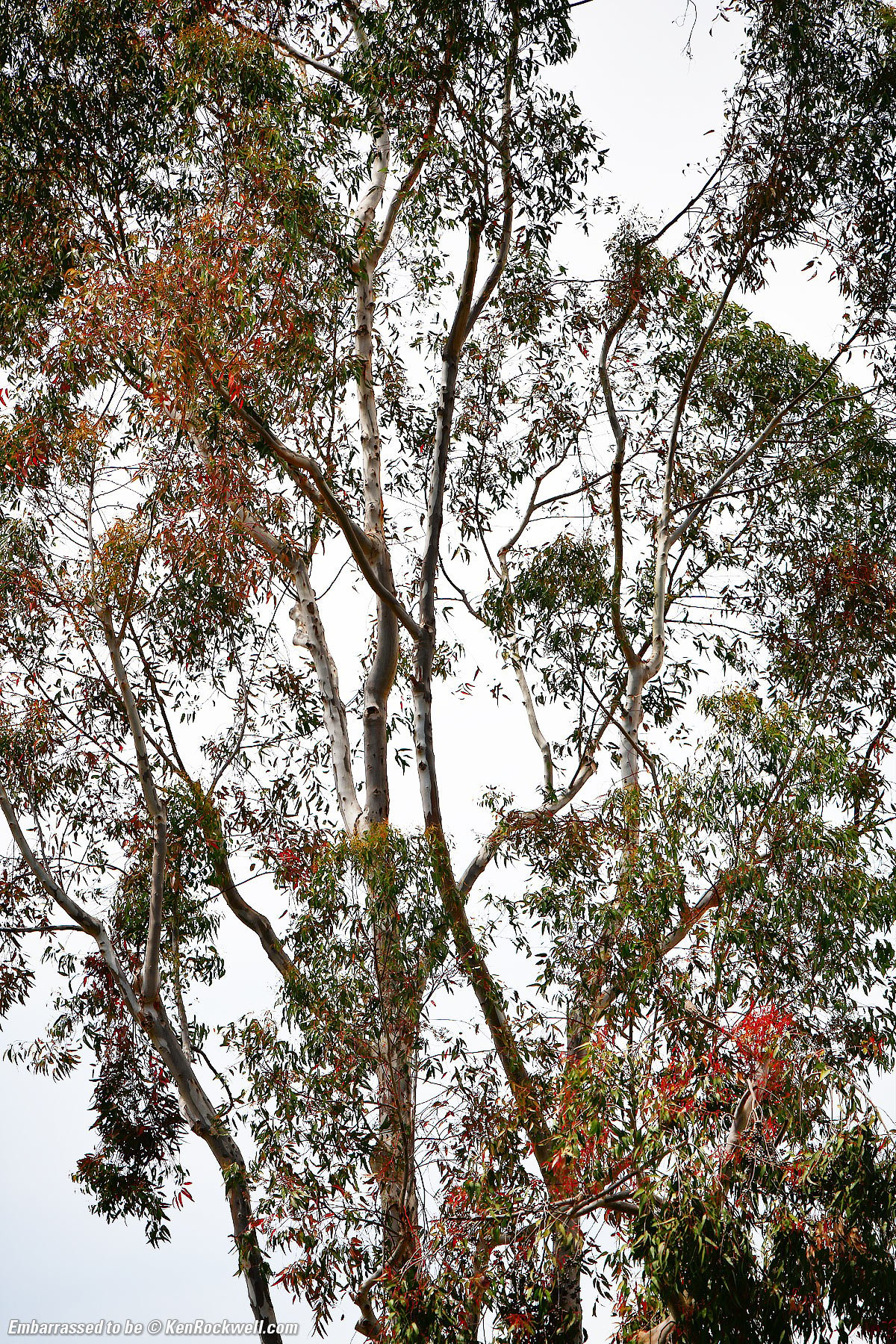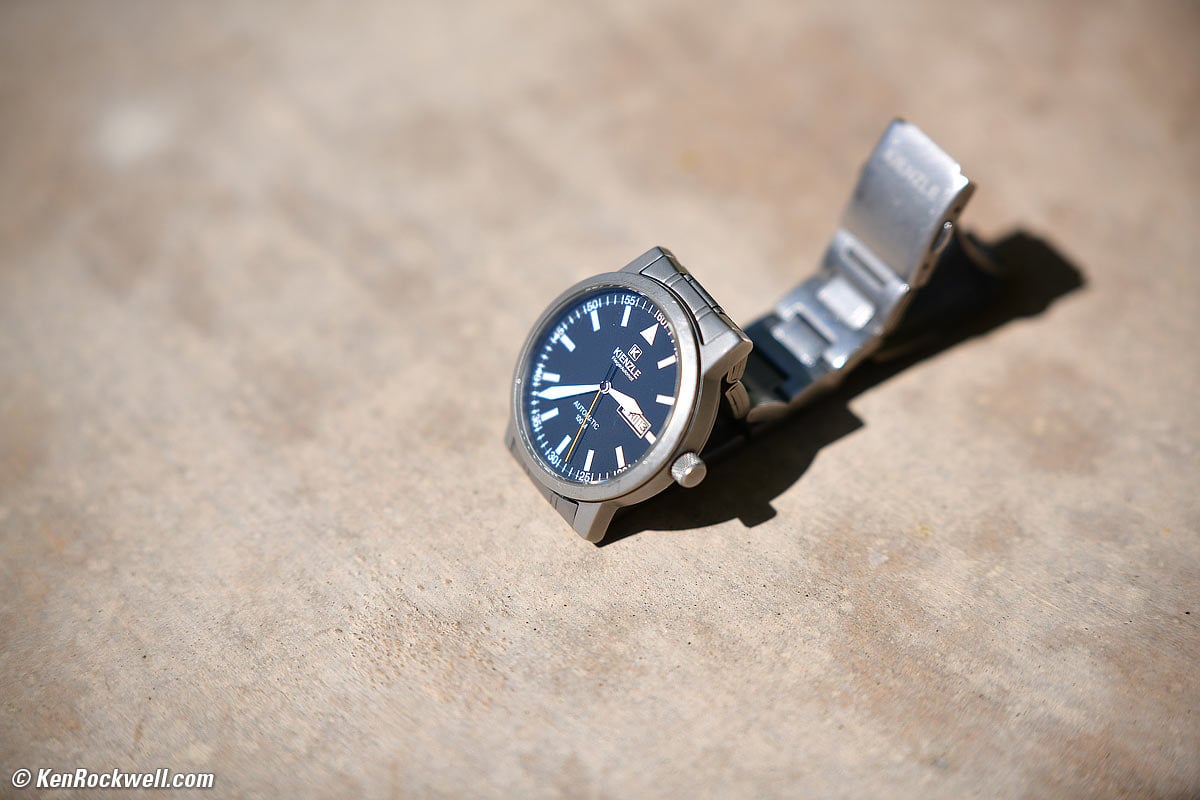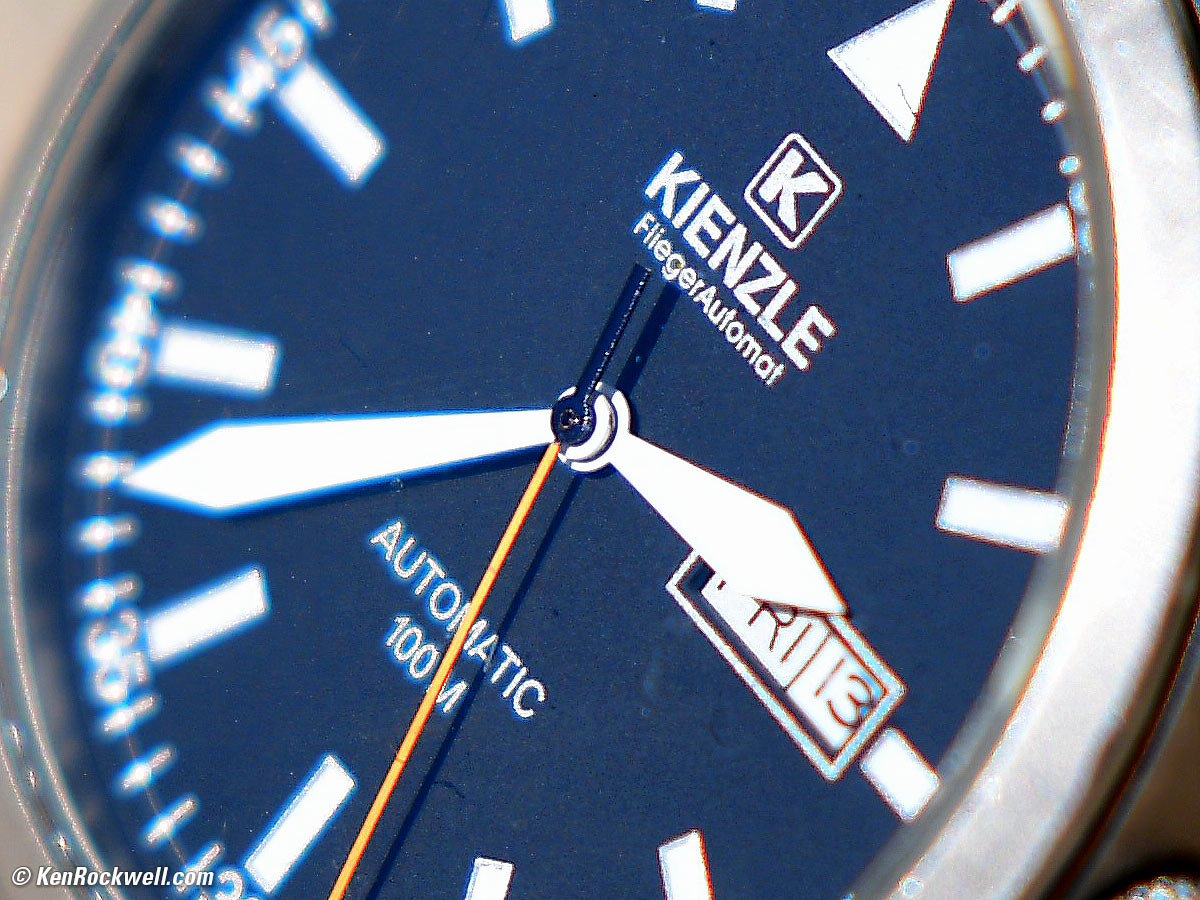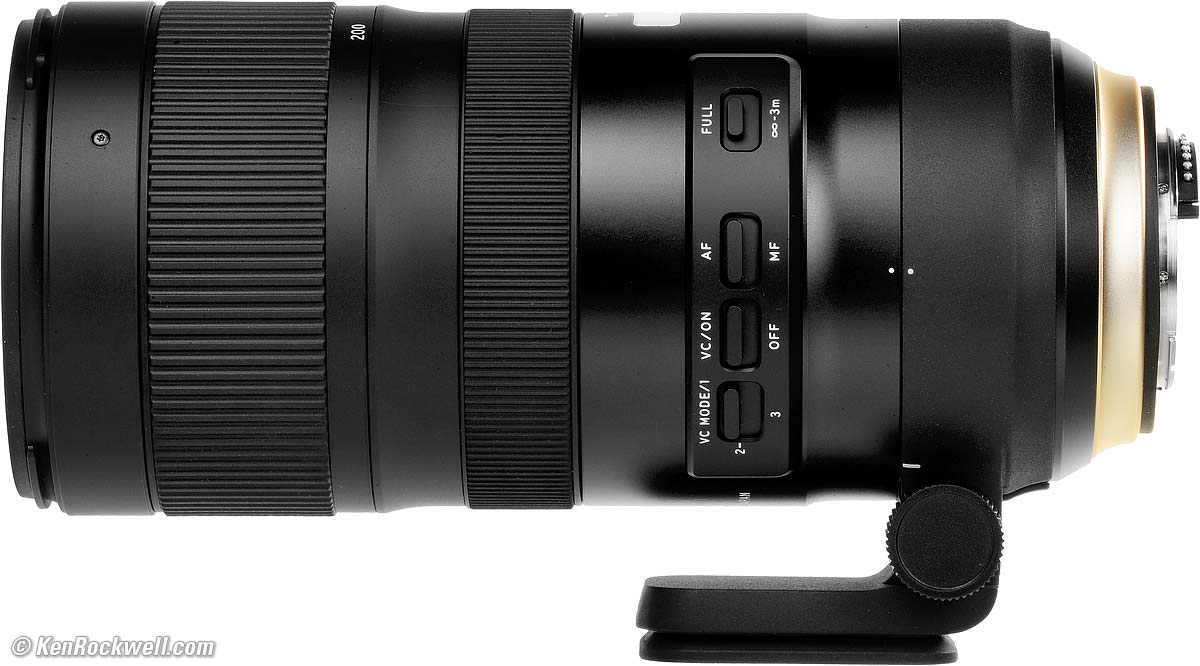Tamron 70-200mm f/2.8
Full-Frame VC G2 (2017-)
Sample Images Intro Format Compatibility
Specs USA Version Performance Compared
Tamron 70-200mm f/2.8 VC G2 (77mm filters, 52.1 oz./1,477g, 3.1'/0.95m close focus, about $1,299) bigger. I got my Nikon version at B&H. I'd also get the Nikon version at Adorama or at Amazon. There is a Canon version at B&H, which I'd also get at Adorama or at Amazon.
This all-content, junk-free websites biggest source of support is when you use those or any of these links to my personally-approved sources when you get anything, regardless of the country in which you live. Tamron does not seal its boxes in any way, so never buy at retail or any other source not on my personally approved list since you'll have no way of knowing if you're missing accessories, getting a defective, damaged, returned, non-USA, store demo or used lens. Get yours only from the approved sources I use myself for the best prices, service, return policies and selection. Thanks for helping me help you! Ken.
April 2018 Sony Sony Lenses Zeiss Nikon Canon Fuji LEICA All Reviews
Nikon 70-200mm f/2.8 FL VR FX (check price)
Nikon 80-200mm f/2.8D FX (check price)
Canon 70-200mm f/2.8 L IS II (check price)
Canon 100-400mm L IS II (check price)
Sample Images
Top Sample Images Intro Format
Compatibility Specs USA Version
All these images are from BASIC JPGs; no RAW files, NORMAL or FINE JPGs were used.
Boulevards, 13 April 2018, Friday. Nikon D850, Tamron 70-200mm f/2.8 G2 at 120mm at f/5.6 at 1/250 at Auto ISO 64, Perfectly Clear. bigger or full-resolution or camera-original © file.
Sofie, 18 April 2018, Wednesday. Cropped from horizontal Nikon D850 file, Tamron 70-200mm f/2.8 G2 at 125mm at f/8 at 1/250 at Auto ISO 64, as shot. bigger or camera-original © file.
Zoey, 18 April 2018, Wednesday. Cropped from horizontal Nikon D850 file, Tamron 70-200mm f/2.8 G2 at 200mm at f/8 at 1/250 at Auto ISO 64, as shot. bigger or camera-original © file.
Introduction
Top Sample Images Intro Format
Compatibility Specs USA Version
|
I buy only from these approved sources. I can't vouch for ads below. |
This Image-Stabilized Tamron 70-200mm f/2.8 is half the price of Canon or Nikon and works great. Feel free to read the rest of this review, but for all practical purposes this lens takes the same pictures as the Canon or Nikon lenses, with the gotcha that there are no lens profiles so you'll have no option for automatic in-camera distortion correction, and on Canon only there will be no correction of lateral color fringes or corner falloff (Nikons correct lateral color and falloff with any lens, no profile needed).
Look at my Sample Images; they're super-sharp. If an extra thousand dollars in your pocket matters to you, by all means consider this lens instead of the Canon or Nikon lens. What you lose isn't so much picture quality as the potential for the camera you buy ten years from now not working with this lens, but if you're considering this lens today you're probably not worried about ten or twenty years from now. Even the reviews at Amazon love it.
Just grab the genuine mechanical focus ring at any time for instant manual-focus override.
This is a very nice lens, complete with internal zooming. Nothing moves externally as you zoom and you can flick the genuine mechanical focus ring at any time for instant manual-focus override.
Good
● Sharp.
● Half the price of Canon or Nikon's similar lenses.
● Same optical performance as Canon's or Nikon's 70-200/2.8s.
● Fast and nearly silent autofocus.
● Great stabilization.
Bad
● For the price, nothing.
Missing
● No lens profiles for in-camera corrections. Nikons can correct any lens for lateral chromatic aberrations and falloff without a profile, but Canon can't correct these without a profile. No camera can correct this lens' distortion without a profile — and neither Canon nor Nikon are going to offer profiles for a Tamron lens.
Format
Top Sample Images Intro Format
Compatibility Specs USA Version
This is a full frame lens, and I'm reviewing it as such.
It works great on APS-C cameras, on which you may make the usual inferences.
Tamron 70-200mm f/2.8 VC G2. bigger.
Compatibility
Top Sample Images Intro Format
Compatibility Specs USA Version
Caution
No camera maker authorizes Tamron to make lenses for their cameras, and no camera maker authorizes you to use this lens on their cameras. If it doesn't work, talk to Tamron, not to Nikon or Canon.
While it seems very compatible, there is always the potential that something won't work on your camera, especially in the future as newer camera models come out.
No worries, so long as you get yours from an authorized source you can return it for a full cash refund if you don't love it or it doesn't work when you get your lens.
Canon
It should work flawlessly on every Canon DSLR and every Canon 35mm autofocus (EOS) camera ever made since 1987.
It should work on Canon's mirrorless EOS-M cameras, but only if you use the EOS-M adapter.
Nikon
It should work perfectly on all FX Nikons, and should work well on DX Nikon models introduced since about 2007.
I tried it on my D3 that I bought back in 2007, and everything works great, as well as on my 2018 D850.
This Tamron 70-200 has a new electronic diaphragm which won't work on camera models introduced before about 2007.
It won't work properly on older DSLRs or any 35mm camera; they won't be able to work with the electronic diaphragm and will only shoot wide-open. If you don't mind shooting wide-open, go ahead and shoot it on older cameras if you like. Even on a 1959 Nikon F you can focus and zoom manually and shoot wide open.
It's useless on my 2006 Nikon D40, which simply shows an Error.
I tried it on my 1990s Nikon F5, and it autofocuses and stabilizes just fine, but it only shoots at f/2.8.
On my 2005 D2HS autofocus and VR work fine, but it only shoots at f/2.8 regardless of how you set the camera, so often you'll get overexposure unless you shoot in A or M mode and set f/2.8.
Autofocus, VR and the diaphragm don't work on my 1980s Nikon F4. I'd have to focus manually, lose VR and have to shoot at f/2.8.
YES: As of January 2018, electronic diaphragm lenses should work only on the:
D5, D4, D4s, D3, D3s, D3P, D3x, Df,
D850, D810, D800/e, D750, D700, D610, D600,
D5600, D5500, D5300, D5200, D5100, D5000,
Nikon 1 J1, J2, J3, J4 with FT-1, Nikon 1 V1, V2, V3 with FT-1, and Nikon 1 S1, S2 with FT-1.
NO: Electronic diaphragm lenses lenses will not work on the
D100, D200, D90, D80, D70 series,
D60, D50, D40 series, or the D3000, and will not work on any 35mm camera. The diaphragm will stay wide-open, which may or may not be a problem for you. In the case of tele lenses this isn't much of a problem because we usually shoot long lenses wide-open, in which case these lenses are compatible with everything.
This won't work with any of the Pronea cameras either— but who cares?
See Nikon Lens Compatibility for more. Honestly half of Nikon's current catalog of lenses won't work on half their new cameras today, so I don't know that this lens will have any more problems than any other Nikon lens. Just be sure to buy only from an approved source so you'll have the option of a 100% cash refund return if it just doesn't work on your camera. Nikon isn't Canon that takes one sentence to say "Compatible with everything since 1987;" Nikon is a patchwork of shame today when it comes to compatibility.
Sony
There is no Sony version. I have no idea how well using an adapter with the Canon version of this Tamron will work on Sony; you're really asking for trouble.
For Sony, get any of the newest Sony 70-200mm f/2.8 GM OSS, Sony 70-200mm f/4 G OSS or Sony FE 70-300mm G FE OSS lenses instead.
This is a DSLR lens, not a mirrorless lens.
Specifications
Top Sample Images Intro Format
Compatibility Specs USA Version
Name
Tamron calls this the Tamron SP 70-200mm f/2.8 Di VC USD G2:
SP: Special Performance; Tamron has called most of their lenses this since at least the 1970s.
Di: Works on digital cameras - so?
VC: Vibration control (Image Stabilization).
USD: Ultrasonic Silent Drive autofocus motor.
G2: Tamron's second 70-200/2.8 VC.
Also has:
∅77: 77mm filter thread.
Optics
23 elements in 17 groups.
5 LD Low Dispersion elements, which help reduce secondary axial chromatic aberration.
1 XLD Extra-Low Dispersion elements, which help reduce secondary axial chromatic aberration.
No aspherical elements.
No high refractive-index elements.
Fluorine coating to resist dirt and smudges.
Internal zoom; nothing moves externally as zoomed.
Coverage
Nikon: FX and DX (digital cameras only).
Canon: Full-Frame, 35mm film and APS-C.
Diaphragm
Tamron 70-200mm f/2.8 VC G2. bigger.
9 rounded blades.
Stops down to f/22.
Focal Length
70~200mm.
When used on a Nikon DX camera, it sees the same angles of view as a 105~300mm lens sees when used on an FX or 35mm camera.
When used on a Canon APS-C camera, it sees the same angle of view as a 112~320mm lens sees when used on a full-frame or
See also Crop Factor.
Angles of View
Full Frame
34.3º ~ 12.3º diagonal.
APS-C
22.3º ~ 8º diagonal.
Autofocus
Internal focus.
No external movement as focused, so no air or dust is sucked in.
Focus Scale
Yes.
Infinity Focus Stop
No.
Depth of Field Scale
No.
Reproduction Ratio Scale
No.
Infrared Focus Indices
No.
Close Focus
3.1 feet (0.95 meters).
Maximum Reproduction Ratio
1:5 (0.20 ×).
Image Stabilizer
Rated 5 stops improvement when you're in Mode 3.
Filters
Plastic 77 mm filter thread.
Hood
Tamron HA025 hood for 70-200mm. bigger.
Case
Just a sack, included.
Tripod Collar
The included, removable metal tripod collar has Arca-Swiss grooves in it.
Size
Nikon
3.5" maximum diameter × 7.5" extension from flange.
88 mm maximum diameter × 191.3 mm extension from flange.
Canon
3.5" maximum diameter × 7.6" extension from flange.
88 mm maximum diameter × 198.3 mm extension from flange.
Weight
52.095 oz. (1,476.9g) actual measured weight, Nikon.
52.4 oz. (1,485 g) specified for Nikon.
52.9 oz. (1,500 g) specified for Canon.
Quality
Made in China ("Designed in Japan"). bigger.
MADE IN CHINA.
Tamron shamefully hides MADE IN CHINA in little dark-gray letters while deceptively putting DESIGNED IN JAPAN in big white letters.
Announced
2017.
Tamron's Model Numbers
Canon: AFA025C-700.
Nikon: AFA025N-700.
Price, USA
$1,299, April 2018.
Tamron 70-200mm f/2.8 VC G2. bigger.
Getting a Legal USA Version
Top Sample Images Intro Format
Compatibility Specs USA Version
This section applies in the USA only.
In the USA, be sure the serial number on your lens (in tiny black-on-black numbers on the bottom of the zoom ring) matches the serial number on the top of the box and on the warranty papers inside the box, and be sure your box has this six-year USA hologram sticker:
Tamron USA hologram sticker. bigger.
If not, you got ripped off with a gray market version from another country. This is why I never buy anyplace other than from my personally approved sources. You just can't take the chance of buying elsewhere, especially at any retail store, because non-USA versions have no warranty in the USA, and you won't even be able to get firmware or service for it — even if you're willing to pay out-of-pocket for it when you need it!
If a gray market version saves you $400 it may be worth it, but for $200 or less I wouldn't risk having no warranty or support.
Always be sure to check your box while you can still return it, or just don't buy from unapproved sources or at retail so you'll be able to have your camera serviced and get free updated firmware as needed.
Get yours from the same places I do and you won't have a problem, but if you take the risk of getting yours elsewhere, be sure to check everything while you still can return it.
Performance
Top Sample Images Intro Format
Compatibility Specs USA Version
Overall Autofocus Manual Focus
Breathing Bokeh Distortion Ergonomics
Eyeblow Falloff Filters Flare & Ghosts
Focal Lengths, actual Lateral Color Fringes
Lens Corrections Macro Mechanics
Stabilization Sunstars Tripod Collar
Overall
The Tamron 70-200/2.8 G2 is an excellent performer. It's the same size and weight of the real Canon or Nikon lenses and works just as well — but only costs half as much!
It's super-sharp, has great bokeh, has fast, quiet autofocus and has great image stabilization.
Autofocus
Autofocus is fast and sure. No problems here. It's nearly silent, too.
Manual Focus
Manual focus is easy. Just slide the real mechanical focus ring with a fingertip.
Just grab the focus ring at any time for instant manual-focus override.
Focus Breathing
Focus breathing is the image changing size as focused in and out. It's important to cinematographers because it looks funny if the image changes size as focus gets pulled back and forth between actors. If the lens does this, the image "breathes" by growing and contracting slightly as the dialog goes back and forth.
The image from this Tamron lens gets smaller as focused more closely. This effect is minor at 70mm, and strong at 200mm.
Bokeh
Bokeh, the feel or quality of out-of-focus areas as opposed to how far out of focus they are, is excellent. Backgrounds are soft and smooth. Here are shots at headshot distance:
Davis 6250 weather station, 17 April 2018. bigger or camera-original © file.
Davis 6250 weather station, 17 April 2018. bigger or camera-original © file.
As always, if you want to throw the background as far out of focus as possible, shoot at 200mm at f/2.8 and get as close as possible.
Distortion
The Tamron 70-200 2.8 G2 has typical distortion: moderate barrel distortion at 70mm and moderate pincushion distortion at 200mm. It has no visible distortion from 100~135mm.
I doubt you'll ever see any distortion from this lens
No camera can correct it automatically because no Nikon and no Canon camera have a lens profile for this lens.
Here are my exclusive Photoshop lens correction filter correction coefficients to correct this distortion manually in your computer. These aren't facts or specifications, these are the results of my research that requires hours of photography and calculations on the resulting data.
On Full-Frame at 10' (3m) |
|
70mm |
+1.50 |
100mm |
+0.70 |
135mm |
-0.60 |
200mm |
-2.00 |
© 2018 KenRockwell.com. All rights reserved.
If I apply these correction factors to the images, the distortion goes away completely.
Ergonomics
Tamron 70-200 2.8. bigger. |
Tamron 70-200 2.8. bigger. |
This Tamron is as good as Nikon or Canon here. It's as big and heavy, and the zoom and focus work exactly as well.
The worst thing is that the feet and meter distance scales are both in the same tiny gray digits. They aren't easy to read, and meters and feet look the same, not bright yellow or green as on Nikon or Canon.
Eyeblow
Very little air pumps in or out of the back of the lens as zoomed.
I doubt there will be any eyeblow.
Falloff
My Nikon D850 didn't seem to correct any falloff, even with Vignette Correction at Normal, which is weird because it did correct the Tamron 24-70mm f/2.8 G2. Nikons need no lens profiles for this.
Canon cameras have no way of correcting falloff because they require a lens profile which doesn't exist for this off-brand lens.
I've greatly exaggerated the falloff by shooting a gray field and placing these on a gray background:
Falloff on full-frame, no correction. This is what you'll get on Canon, and on Nikon with Vignette Control turned off.
© 2018 KenRockwell.com. All rights reserved.
Falloff on Nikon full-frame, Vignette Control set to Normal.
© 2018 KenRockwell.com. All rights reserved. |
Filters, use with
There's no need for thin filters. I can use several regular 77mm filters without vignetting on full frame.
Go ahead and use your standard rotating polarizer and grad filters.
Flare & Ghosts
This lens is very resistant to ghosting. It is very hard to get any ghosts.
Actual Focal Lengths
Like many zooms, this Tamron lens reduces its actual focal lengths at closer focusing distances to allow it to focus more closely.
The marked focal lengths are correct at infinity.
The actual focal lengths stay about as marked as you get closer at the 70mm end, but at the 200mm end at close distances the actual focal lengths can be much less than marked. This is as intended and perfectly normal with modern lenses.
Lateral Color Fringes
There are no color fringes as shot on Nikon cameras, which by default correct for any that may be there.
I didn't shoot this on Canon, which would require a lens profile to correct any lateral color this lens may have.
Lens Corrections
Nikon
Nikons correct automatically for lateral color fringes (chromatic aberration). No lens profile is needed for this on Nikon.
Nikons cannot correct for distortion because they require a lens profile, which doesn't exist for this off-brand lens.
Canon
Canon has no lens profile for this lens, and obviously isn't going to be writing one for this off brand lens.
Therefore there is no correction for falloff (peripheral illumination), lateral color fringes (chromatic aberration), distortion or diffraction on any Canon camera.
Macro
This lens focuses very closely, but because like many zooms it cheats and compresses the longer focal lengths at close distances, macro gets close, but not that close. There's also some vignetting when shot wide-open at f/2.8:
Kienzle Flieger Automat 800/2843, 13 April 2018. Nikon D850, Tamron 70-200mm f/2.8 G2 at 70mm at f/2.8 at 1/2,000 at Auto ISO 64. bigger or camera-original © file.
Shot wide open as I'm showing here, spherical aberration is responsible for the slight halos.
1,200 × 900 pixel crop from above. bigger or camera-original © file.
If this is about 6" (15cm) wide on your screen, the complete image would print at a huge 27½″ × 41¼″ (70 × 105 cm) at this same high magnification. If this is about 12" (30cm) wide on your screen, the complete image would print at a mammoth 55 × 82½″ (1.4 × 2.1 meters) at this same extremely high magnification!
Stopping down, which is almost always the way we shoot macro, it gets much sharper:
Kienzle Flieger Automat 800/2843, 13 April 2018. Nikon D850, Tamron 70-200mm f/2.8 G2 at 70mm at f/8 at 1/250 at Auto ISO 64. bigger or camera-original © file.
1,200 × 900 pixel crop from above. bigger or camera-original © file.
If this is about 6" (15cm) wide on your screen, the complete image would print at a huge 27½″ × 41¼″ (70 × 105 cm) at this same high magnification. If this is about 12" (30cm) wide on your screen, the complete image would print at a mammoth 55 × 82½″ (1.4 × 2.1 meters) at this same extremely high magnification!
Macro performance is fine.
Mechanical Quality
Tamron 70-200mm f/2.8 VC G2. bigger.
This is a big, heavy and well-made lens. Most of the outside is plastic, and most of the insides are metal.
Hood
Plastic bayonet, included.
Front Bumper
Rubber.
Filter Threads
Plastic.
Hood Bayonet Mount
Plastic.
Front Barrel
Plastic.
Zoom Ring
Rubber-covered plastic.
Serial Number
Laser engraved in black-on-black on the bottom of the zoom ring.
Mid Barrel
Plastic.
Focus Ring
Plastic.
Rear Barrel
Section with focus distance window: metal.
Rearmost Barrel
Section behind tripod collar: metal.
Tripod Collar
Metal.
Removable.
Identity
Printed around barrel near focus window, both in white on top and in gray on the bottom.
Internals
Plastic and plenty of metal.
Dirt Seal at Mount
Yes.
Mount
Dull chromed metal.
Markings
Paint.
Serial Number
Laser engraved in black-on-black on the bottom of the zoom ring (not the barrel).
Date Code
None found.
Noises When Shaken
Minor clattering.
Made in
China.
Sharpness
The only limitation to picture sharpness is your skill as a photographer.
It's super-sharp, even out to the corners wide-open at f/2.8 at 200mm. It's sharper than the original Nikon 70-200/2.8 VR, which was soft in the corners at f/2.8 at 200mm, so there.
Here's a boring sharp shot of a dull subject. This is shot wide-open at f/2.8 where most zooms are their softest, and this Tamron is still super-sharp out to the corners. Of course not everything is in focus, but staying sharp to the corners at 2.8 is what the original Nikon 70-200/2.8 VR couldn't do and this Tamron can:
Dreary Eucalyptus shot wide-open at f/2.8, 21 April 2018. Nikon D850, Tamron 70-200mm f/2.8 G2 at 200mm at f/2.8 at 1/2,000 at Auto ISO 64. bigger or camera-original © file.
Spherochromatism
Spherochromatism, also called "color bokeh" by laymen, can cause colored fringes on out-of-focus highlights, usually seen as green fringes on backgrounds and magenta fringes on foregrounds with fast, long lenses shot wide open.
It is an advanced form of chromatic aberration in a different dimension than lateral color. Spherochromatism is most commonly seen in fast lenses of moderate focal length when shooting contrasty items at full aperture. It goes away as stopped down.
This lens has a little spherochromatism, with background highlights having slight blue color fringes and foreground highlights having slight red fringes. If you're in perfect focus, there are no fringes.
Kienzle Flieger Automat 800/2843, 13 April 2018. Nikon D850, Tamron 70-200mm f/2.8 G2 at 200mm at f/2.8 at 1/2,000 at Auto ISO 64. bigger or camera-original © file.
1,200 × 900 pixel crop from above. bigger or camera-original © file.
If this is about 6" (15cm) wide on your screen, the complete image would print at a huge 27½″ × 41¼″ (70 × 105 cm) at this same high magnification. If this is about 12" (30cm) wide on your screen, the complete image would print at a mammoth 55 × 82½″ (1.4 × 2.1 meters) at this same extremely high magnification!
Image Stabilization
Image Stabilization (IS or Vibration Reduction (VR)) works great. The image locks down in my finder, and I can get ultra-sharp shots hand-held at much slower speeds than I'd expect, so all is good.
Sunstars
With a rounded 9-blade diaphragm there aren't any sunstars at large apertures, and from f/11 and on it will give reasonable 18-pointed sunstars on brilliant points of light.
Tripod Collar
The tripod collar is very good. It has a friction lock, but no 90º clicks.
Rotate it and it pulls off the back of the lens — but then you expose four prominent protruding screw heads that aren't that comfortable for hand-holding.
The niftiest part is that there are Arca-Swiss grooves in it.
Compared
Top Sample Images Intro Format
Compatibility Specs USA Version
NEW: Best 70-200mm f/2.8 Lenses Compared.
This Tamron is half the price, and optically just as good as the lenses from Canon and Nikon.
What you lose for paying only half as much is that this Tamron is built only to good consumer levels, while the Nikon 70-200mm f/2.8 FL VR FX and Canon 70-200mm f/2.8 L IS II are built to extraordinary professional standards with mostly metal barrels and metal filter threads. Nikon and Canon's 70-200/2.8s are built to withstand a lifetime of full-time professional environmental and physical abuse, while this Tamron is designed for normal people who take care of their equipment.
Every non-camera-brand product has the potential to be, or become, incompatible with your camera. While it probably will be perfect with your camera today (and if it's not and you get yours from an approved source you can send it back for a 100% cash refund), there's no telling if it will be compatible with whatever camera you might buy 10 years from now. I'm still using my Canon and Nikon 80-200mm f/2.8 lenses that I bought back in the 1980s and 1990s with my newest digital cameras, but no one can be sure if this Tamron lens will work with cameras 10 years from now. While off-brand makers all smile and try to reassure you today that they'll be around in the future to update lenses, experience has shown that these makers just walk away when it comes to trying to update 10 year old lenses.
Let's be serious: The Nikon 70-200mm f/2.8 FL VR FX costs $2,800 as I write this. That's $1,500 more than this lens. You could buy this Tamron today, and if in ten years it stops working, buy another brand-new version from Tamron and still be way ahead.
Usage
Top Sample Images Intro Format
Compatibility Specs USA Version
Tamron 70-200mm f/2.8 VC G2. bigger.
VC MODE/1
This selects what kind of Image Stabilization you're getting.
Mode 1, the top position, is the usual setting. It stabilizes your photos, as well as your viewfinder image.
Mode 2 is for panning.
Mode 3 offers even better picture stabilization than Mode 1, but it may make the viewfinder image look shakier because it's optimizing itself to stabilize the captured image instead of also stabilizing the pre-exposure viewfinder image.
Use Mode 1, unless you don't mind a shakier viewfinder image and aren't getting the results you want in Mode 1. Mode 2 is only for panning.
VC / ON (OFF)
This activates or deactivates Image Stabilization.
Always leave it on (VC/ON), except if you are on a sturdy tripod (OFF).
AF (MF)
This selects auto (AF) or manual focus (MF).
Always leave it at AF, at which setting you can move the focus ring at any time for instant override.
Only set it to MF if you want to lock it in manual focus.
FULL / ∞-3m
This is a focus limiter that, in the ∞-3m setting, doesn't let the lens focus any closer than 3 meters (10 feet).
Leave this at FULL, unless the lens is racking all the way in and out hunting for the subject, which you know is at least 3m/10' away. I doubt you'll ever need this, unless you're shooting distant things through an obstruction.
Recommendations
Top Sample Images Intro Format
Compatibility Specs USA Version
For Nikon
Tamron's own rear cap is awful. Leave it in the box and get a real Nikon rear cap for about $5. Tamron's front cap is OK.
The Nikon 70-200mm f/2.8 FL costs more than double what this Tamron does (check Nikon's price). The Nikon lens is a masterpiece in every way, and weighs two ounces (50g) less, but is it really worth more than twice the price of this Tamron considering that they both take the same pictures?
If you love nice equipment and deserve the best then you, like me, probably shoot nothing but Nikon — and you wouldn't be reading this review.
However, if you're a real-world shooter for whom money matters and you're more interested in great pictures than showy equipment, I'd recommend this Tamron over the Nikon 70-200mm f/2.8 FL.
Your camera cannot correct this lens' distortion in-camera since there's no lens profile, but even with my 1990s 80-200 f/2.8 AF-S I can.
I'd pass on a used original-version Nikon 70-200/2.8 VR; it's softer than this lens at 200mm. This Tamron is as sharp as the 80-200/2.8 AF-S, 80-200/2.8 AF-D and the other 70-200/2.8 lenses. See Nikon 70-200/2.8s Compared for the differences between them. They're all as sharp as this Tamron, except for the first Nikon 70-200/2.8 VR.
If you deserve the best and don't worry about price, sure, get the Nikon lens. That's what I own; I'm obviously very successful at what I do and my revenues are such that the price of lenses, which last me for a decade or more, don't matter if they give me even the slightest competitive advantage. When I license an image it's usually for more than the price of this lens; I'm not some blogger or YouTuber who just talks and has no portfolio to show for it; my two most recent clients are Merck Pharmaceuticals and McDonald's. On the other hand, for people who shoot for fun and for whom the price of equipment does matter, this is certainly a more sane lens than Nikon's extraordinary FL.
See also Is It Worth It.
I got my Nikon version of this Tamron at B&H. I'd also get the Nikon version at Adorama or at Amazon.
For Canon
Tamron's own rear cap is awful. Leave it in the box and get a real Canon rear cap for about $7. Tamron's front cap is OK.
The choice isn't as clear with Canon because the state-of-the-art Canon 70-200mm f/2.8 L IS II only costs $1,899 as I write this, and because Canon cameras can't correct for lateral color fringes as Nikons can with off-brand lenses, so the optics of this Tamron may or may not be as good when shot on Canon.
Your camera cannot correct this lens' distortion in-camera since there's no lens profile, but distortion is minimal in this Tamron.
If you deserve the best and don't worry about price, of course get the Canon 70-200mm f/2.8 L IS II (or my favorite, the Canon 100-400mm IS L II). This is what I own; I'm obviously very successful at what I do and my revenues are such that the price of lenses, which last me for a decade or more, don't matter if they give me even the slightest competitive advantage. When I license an image it's usually for more than the price of this lens; I'm not some blogger or YouTuber who just talks and has no portfolio to show for it; my two most recent clients are Merck Pharmaceuticals and McDonald's. On the other hand, for people who shoot for fun and for whom the price of equipment does matter, this Tamron is certainly worth a look.
See also Is It Worth It.
I'd get the Canon version of this Tamron at B&H, at Adorama or at Amazon.
For Sony
Don't mess with adapters to use the Nikon or Canon version on Sony; all of the genuine Sony 70-200mm f/2.8 GM OSS, Sony 70-200mm f/4 G OSS and Sony FE 70-300mm G FE OSS lenses will have better optics optimized for mirrorless cameras, as well as much faster autofocus also optimized to the new breed of Sony cameras. This is an old-guard DSLR lens, not a mirrorless lens.
Filters & Protection
I use a clear (UV) protective filter instead of a cap. I only use a cap when I throw this in my bag, otherwise I leave a clear protective filter on my lens at all times so I'm ready to shoot instantly.
The best protective filter is the 77mm Hoya multicoated HD3 UV which uses hardened glass and repels dirt and fingerprints.
For less money, the B+W 77mm 010 is an excellent filter, as is the multicoated version and the basic multicoated Hoya filters or the 77mm Nikon Clear (NC - UV), but the Hoya HD3 is the toughest and the best.
Filters last a lifetime, so you may as well get the best. The Hoya HD3 stays cleaner than the others since it repels oil and dirt, and will outlast this lens.
For color slides like Fuji Velvia 50, I use a 77mm Nikon A2 or 77mm Hoya HMC 81A outdoors.
For B&W film outdoors if you're shooting a Canon EOS 35mm camera (this lens doesn't work properly on any Nikon 35mm camera), I'd use a 77mm Nikon Y48 or O56 filter, or a 77mm Hoya HMC Yellow K2 or 77mm orange filter. Use a yellow filter for normal results outdoors on B&W, and I prefer the orange for stronger clouds. If you use no filter the skies and clouds will be washed-out because B&W film is overly sensitive to blue and ultra-violet light; a yellow filter gives a natural rendition. A 77mm red filter will give darker skies with even more prominent clouds.
© Ken Rockwell. All rights reserved. Tous droits réservés. Alle Rechte behavioral.
Helping those who help us
I got my Nikon version at B&H. I'd also get the Nikon version at Adorama or at Amazon. There is a Canon version at B&H, which I'd also get at Adorama or at Amazon.
This all-content, junk-free websites biggest source of support is when you use those or any of these links to approved sources when you get anything, regardless of the country in which you live. I use the stores I do because they ship from secure remote warehouses where no one gets to touch your new lens before you do. Buy only from the approved sources I use myself for the best prices, service, return policies and selection.
If you find this page as helpful as a book you might have had to buy or a workshop you may have had to take, feel free to help me continue helping everyone.
If you've gotten your gear through one of my links or helped otherwise, you're family. It's great people like you who allow me to keep adding to this site full-time. Thanks!
If you haven't helped yet, please do, and consider helping me with a gift of $5.00.
As this page is copyrighted and formally registered, it is unlawful to make copies, especially in the form of printouts for personal use. If you wish to make a printout for personal use, you are granted one-time permission only if you PayPal me $5.00 per printout or part thereof. Thank you!
Thanks for reading!
Mr. & Mrs. Ken Rockwell, Ryan and Katie.
